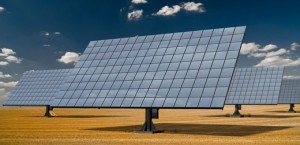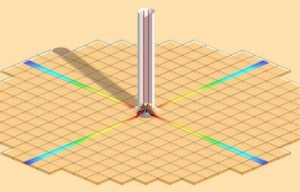Solar energy technology is advancing fast enough that I’ve decide to lump together several updates into single posts now and then.
To start with, the Frauenhofer Institute has showed off some highly flexible solar panels, placing them on a ski helmet. This may not sound like a big deal, flexible panels have been around for a while, right? Well, not really. Typically, when you see a flexible panel, it can only bend in one direction – around a cylinder, for example. This new technology allows the panel to conform to compound surfaces, like a sphere or, in this case, a ski helmet. For now, testing this on ski helmets is a good, extreme use environment (the solar cells become more efficient with cold, but batteries become less efficient). Just about ever helmet design could benefit the user with this – motorcyclists, construction workers, bicyclists, you name it. The first product, a ski helmet, is targeted for sale at the end of 2012.
Solar cell comparisons invariably come down to one key metric, the efficiency. Going along with this is measuring reflectance, or how much solar energy is reflected and thus unable to be converted into electric energy. Scientists at Natcore Technology have set a new record for this, producing wafers that absorb an incredible 99.7%! This promises to increase solar panel efficiency, which in turn will lower cost and increase adoption of solar energy worldwide.
There are two main types of solar energy devices on the market today – photovoltaic panels that covert visible wavelengths into electric power, and solar thermal that takes the abundant infrared radiation emitted by the sun and uses that heat energy to do the same (via turbines or other methods, or just using the heat directly to heat a house or water heater). Now, Naked Energy has designed a hybrid solar energy system which has solar panels to make electricity, but also pumps water through the tubes to make that heat available for other energy uses (heating a house being the most feasible). It’s not a utility-scale sort of system, but great for home or business users.



